Science Meets Longevity
I’ve been asking the same question for a long time:
Why do we age, and can we fight it?
This site is my way of chasing the answers and sharing the tools, insights, and science I find along the way.
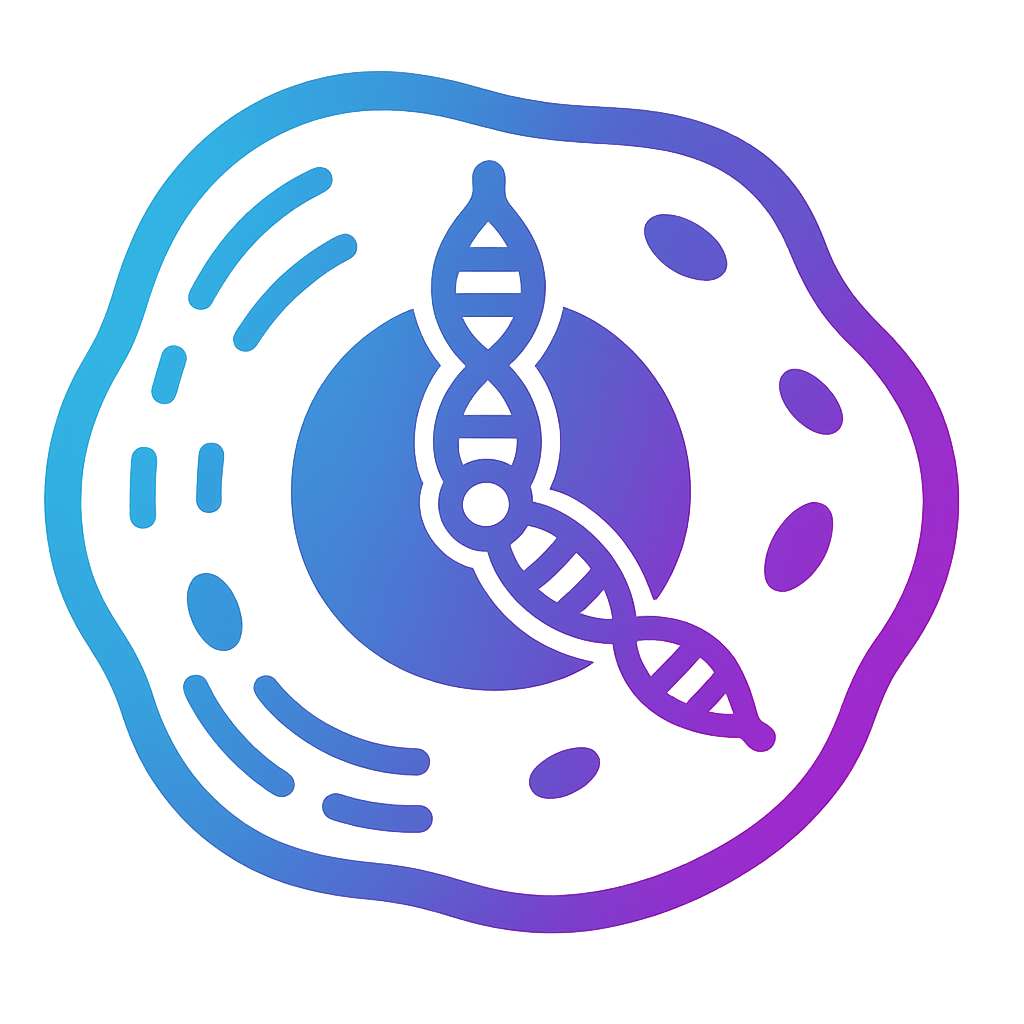
Journey Into the Biology of Time
I’ve been asking the same question for a long time:
Why do we age, and can we fight it?
This site is my way of chasing the answers and sharing the tools, insights, and science I find along the way.

Journey Into the Biology of Time
I’ve been asking the same question for a long time:
Why do we age, and can we fight it?
This site is my way of chasing the answers and sharing the tools, insights, and science I find along the way.
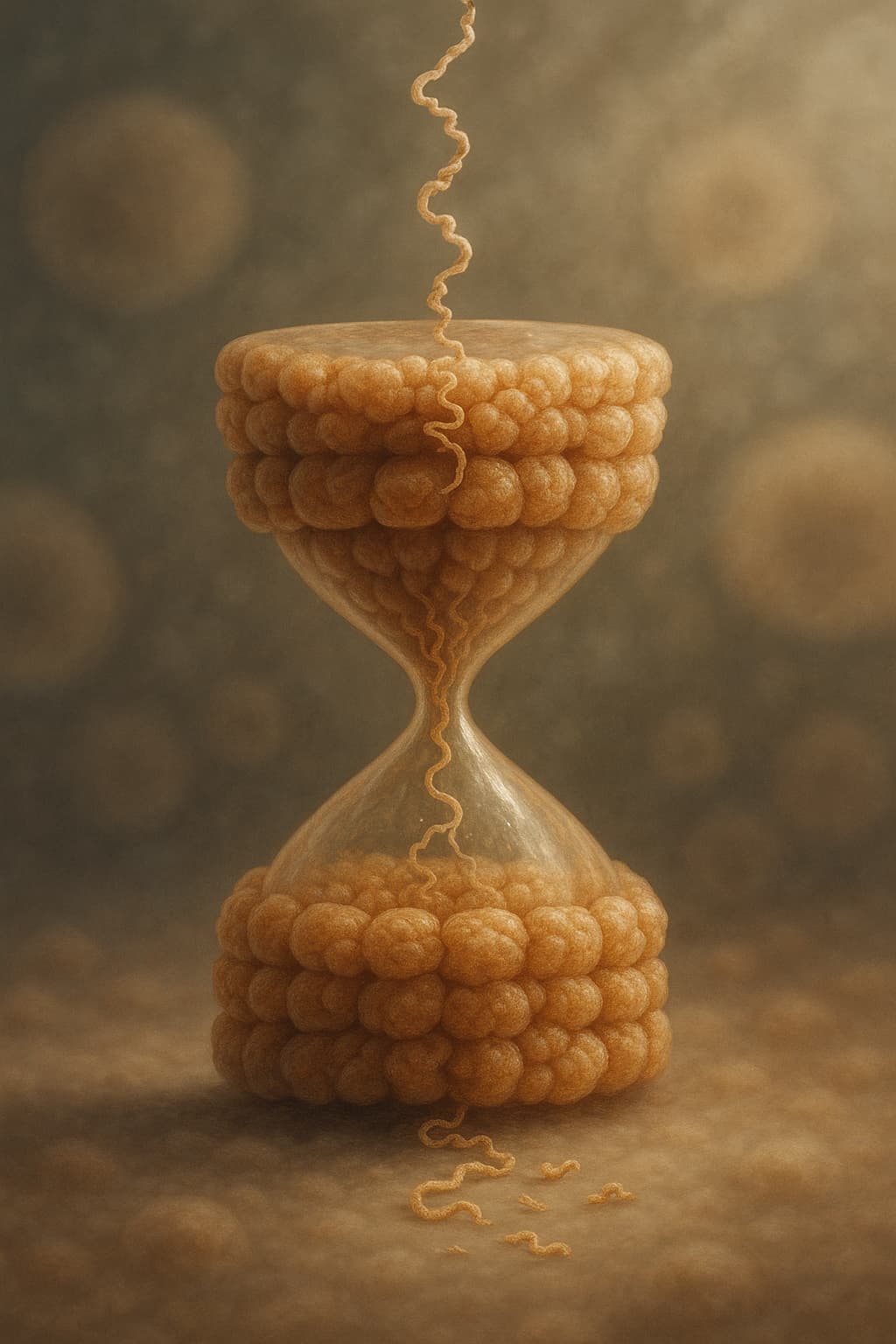
“When the cellular housekeeper loses control, clutter builds and aging begins to show.“
Welcome, keeper of the cellular workshop.
If you have journeyed this far into the science of longevity, you are ready to meet one of the most crucial yet underappreciated forces in the story of aging: proteostasis. This delicate balance of creating, folding, repairing, and recycling proteins is one of the quiet pillars that keeps our cells alive and functional. When it begins to fail, we see one of the clearest links between proteostasis and aging, making it a central part of the hallmarks of aging.
Proteins are the cell’s workforce, responsible for nearly every task from building structures to carrying messages, repairing damage, and defending against threats. But with age, this system becomes strained. Misfolded or damaged proteins start to accumulate, clumping into toxic aggregates. The cleanup crews such as autophagy and other repair pathways slow down, leaving cellular pathways clogged and disrupted. This breakdown in proteostasis and aging is far more than a minor inconvenience. It fuels chronic inflammation, accelerates tissue damage, and contributes to degenerative diseases including Alzheimer’s and Parkinson’s.
In this exploration, we will uncover:
To understand proteostasis and aging is to recognize the hidden maintenance system that works tirelessly to keep life’s machinery running smoothly. And by learning how to protect it, we can help our cells preserve their resilience and extend the quality of our years.
Let us step into this cellular workshop and discover what it takes to keep its gears turning in harmony.
First of all, lets talk about proteins. they are the essential workers of life, performing nearly every task inside your cells, from building structures, shuttle molecules, repair damage, and drive chemical reactions. But these microscopic powerhouses don’t arrive ready to go.
So, what exactly are proteins? and where are they coming from ?
At their core, proteins are long chains of amino acids, like beads on a string, decoded from your genome through a process called gene translation. But to function properly, these chains must fold into precise three-dimensional shapes. That’s where the cell’s internal quality-control system comes in: proteostasis, short for protein homeostasis, which ensures proteins are correctly folded, maintained, and cleared when damaged.
Think of proteostasis as your cellular housekeeping crew, making new proteins, folding them correctly, monitoring their health, and recycling them when needed. Without this tight regulation, things go south quickly.
How a protein comes to life?
That shape is everything. A misfolded protein can’t do its job and worse, it can become toxic. Over time, these protein misfolding events add up, especially as the proteostasis network declines with age, leading to clumps, cellular stress, and many hallmarks of aging.
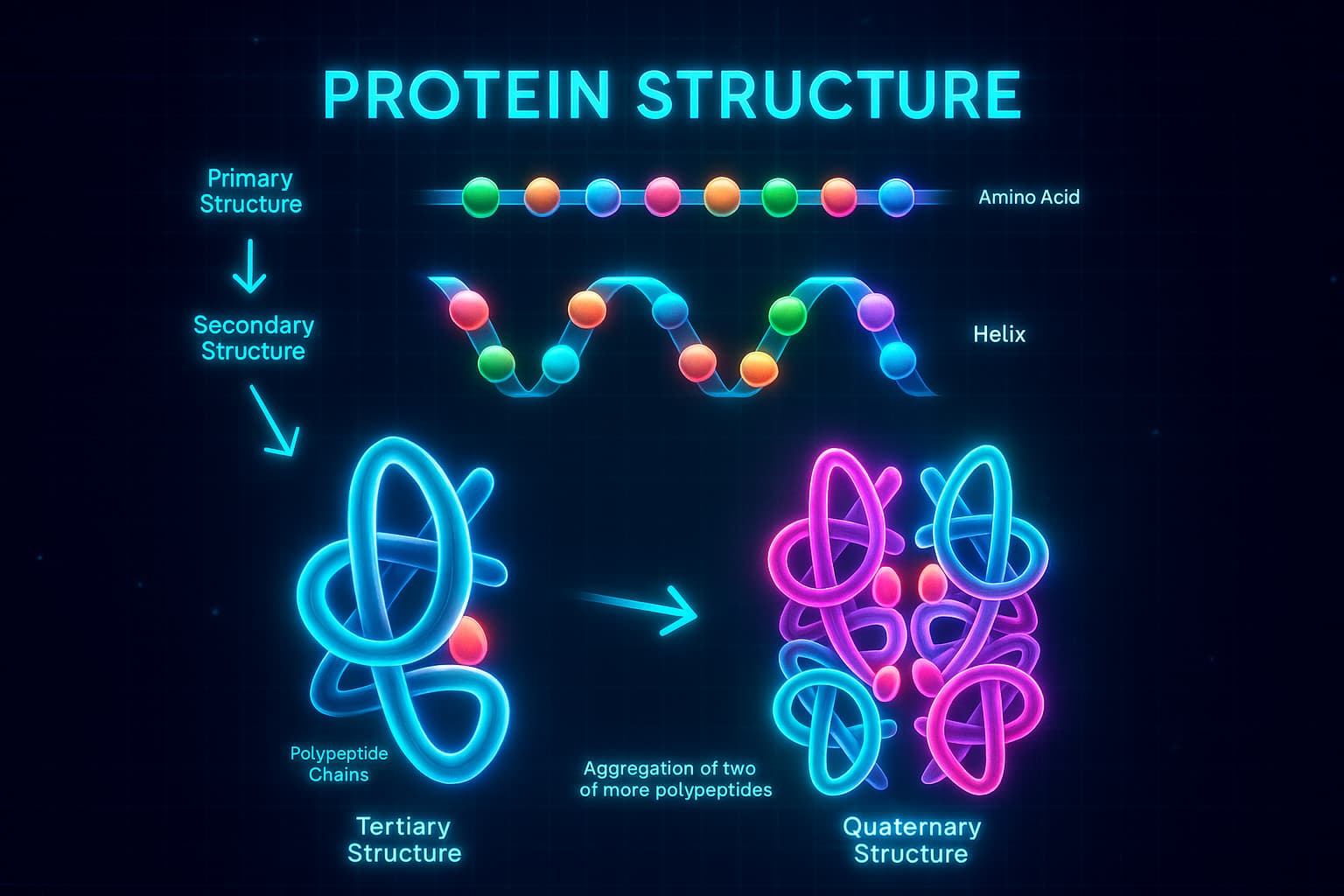
But if a protein is misfolded, damaged, or lingering past its useful lifespan, it can become dangerous, When proteins misfold or break down, they don’t just stop working, they can cause real trouble. They may form sticky clumps, jam up cellular processes, or even trigger chronic inflammation.
Your cell’s of quality control responsibilities:
The quality control Team:
Together, this finely tuned network helps maintain proteostasis and, by extension, cellular harmony.
But as we age, this system starts to fray. Folding errors increase. Cleanup slows down. And the cellular workshop begins to overflow with broken, dysfunctional proteins, contributing to everything from cellular stress to neurodegeneration and loss of longevity.
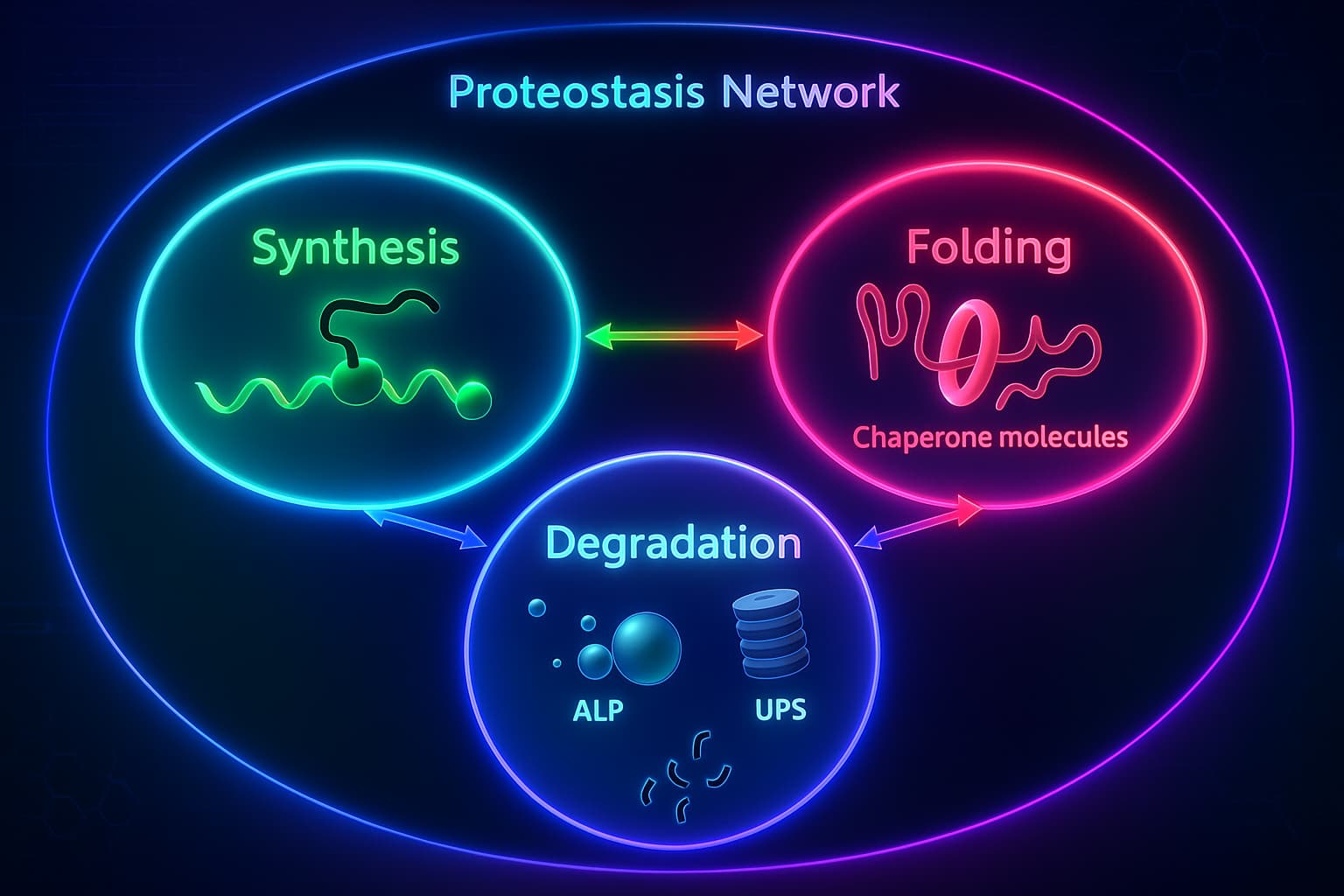
Like any hardworking factory, the proteostasis system doesn’t run forever.
As we age, the cellular housekeeper starts falling behind.
But why proteostasis declines ?
1. Oxidative Stress: The Molecular Rust
Over time, cells accumulate damage from reactive oxygen species (ROS), unstable byproducts of metabolism that ramp up with exposure to pollution, UV light, and toxins. These ROS act like sparks in a factory, gradually rusting cellular machinery and fraying blueprints.
A major source of ROS is mitochondrial dysfunction, another hallmark of aging, where the cell’s energy factories become leaky and inefficient, generating more oxidative stress and compounding the burden on proteostasis.
Within this environment, ROS damage proteins responsible for folding and repair, like chaperones and proteasome enzymes. They also modify amino acids in existing proteins, making them prone to misfolding and clumping.
Result? More faulty proteins and a repair system under siege.
2. Protein Clutter: When Damage Outpaces Cleanup
Even well-made proteins eventually degrade. But as we age, the systems that clear them, the proteasome and autophagy, lose efficiency.
After decades of nonstop work, the proteasome slows down, and autophagy, the cell’s deep-cleaning system, becomes less responsive. Misfolded proteins start to pile up, forming sticky aggregates that clog cellular pathways and disrupt function.
This cluttered environment also impairs intercellular communication, another hallmark of aging, making it harder for cells to coordinate stress responses and cleanup and further accelerating the decline in tissue function.
3. Fewer Chaperones: The Folding Assistants Go on Break
With age, molecular chaperones, the specialized proteins that help others fold correctly, decline in both number and efficiency. That means more folding errors from the start, feeding the cycle of misfolded proteins and overwhelming the cell’s already burdened repair systems.
This early misfolding pressure is worsened by upstream damage like DNA damage and telomere shortening, two hallmarks that destabilize genetic instructions and cellular replication, increasing the likelihood of errors during protein synthesis and folding.
4. Impaired Stress Responses: Losing Cellular Flexibility
Young cells are remarkably adaptable, they sense stress and respond by upregulating proteostasis defenses, activating repair pathways, and deploying extra chaperones. But as we age, this stress response system begins to fail.
This loss of adaptability is closely tied to deregulated nutrient sensing and epigenetic alterations, two interconnected hallmarks of aging that reduce the cell’s ability to detect environmental cues and activate protective gene programs when needed.
So when new damage arises, aging cells struggle to mount an effective response, leaving misfolded proteins to accumulate unchecked.
In Summary:
With age, the proteostasis network weakens on all fronts:
This cascade contributes directly to aging itself, which is why loss of proteostasis is recognized as one of the fundamental hallmarks of aging.
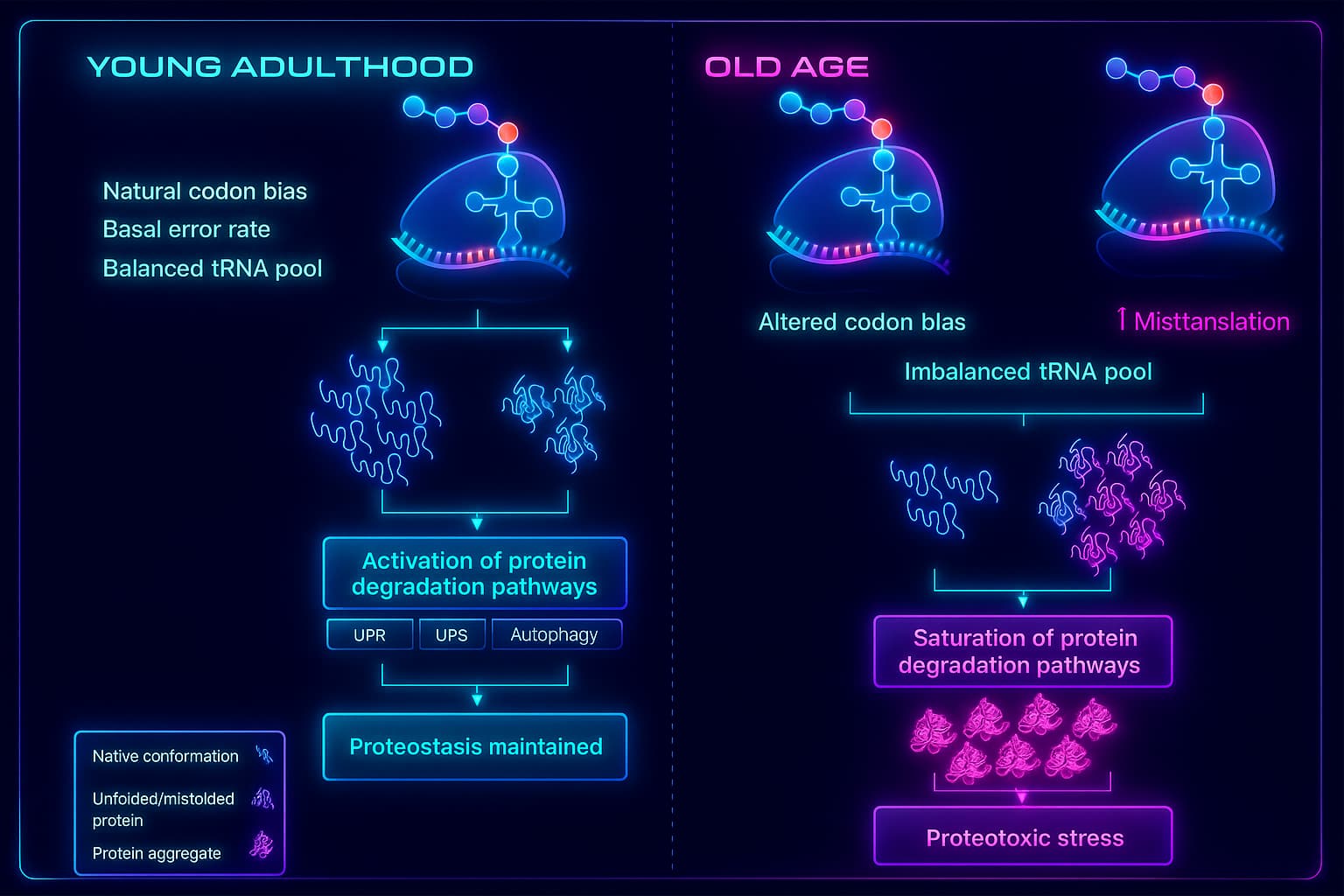
When the proteostasis network begins to fail, your cells struggle to maintain their identity and When the proteostasis network falters, the consequences ripple across the body, disrupting energy, repair, and immune balance at the cellular level.
What happens inside our cells when the housekeeper falls behind:
1. Energy Production Declines
Many of the proteins that keep your mitochondria running, your cells’ tiny power plants, need precise folding and constant upkeep.
But as misfolded proteins accumulate, mitochondria get bogged down and inefficient, leading to lower energy output.
This adds to the burden of mitochondrial dysfunction, another core hallmark of aging, and leaves cells sluggish and unable to meet their energy demands.
2. Repair Systems Slow Down
When damaged proteins pile up, cellular resources are stretched thin.
Instead of focusing on regular upkeep, your cells are stuck managing the clutter. This weakens their ability to repair DNA damage, recycle components, or respond to internal stress.
The decline in proteostasis also feeds into other aging mechanisms, like telomere shortening and stem cell exhaustion, making regeneration and recovery even harder.
3. Inflammation Ramps Up
Protein aggregates aren’t passive, they irritate cells, activate stress pathways, and turn on inflammatory responses, even when there’s no infection.
This fuels chronic low-grade inflammation, or inflammaging, a recognized hallmark of aging that further damages tissues, accelerates cellular decline, and weakens immune resilience.
The Result? Widespread Dysfunction
As proteostasis breaks down:
This systemic breakdown contributes to frailty, cognitive decline, and an increased risk of age-related diseases, especially neurodegenerative disorders like Alzheimer’s and Parkinson’s, where toxic protein aggregates play a central role in disease progression.
Just like other hallmarks of aging, the decline of proteostasis isn’t entirely out of our control.
Your everyday choices, what you eat, how you move, how you sleep, can help keep your cellular housekeeper running more smoothly for longer.
1. Regular exercise: A workout for your cellular housekeeper
Physical activity does more than strengthen your muscles, it also stimulates cellular cleanup systems.
Exercise activates autophagy (your cell’s recycling system) and enhances proteasome activity, both of which help clear out damaged or misfolded proteins.
Think of it as calling in an extra cleaning crew every time you work out: More broken proteins get cleared, clutter is reduced, and your cells can function more efficiently.
2. Healthy diet: Feeding your proteostasis network
Certain nutrients actively support proteostasis.
Polyphenols, plant compounds found in foods like green tea, berries, turmeric, and dark chocolate, reduce protein aggregation and promote autophagy.
A diet rich in antioxidants and anti-inflammatory compounds also protects your cleanup machinery from oxidative damage.
3. Good sleep: Your nightly cleanup shift
Sleep is when your body shifts into repair mode.
Autophagy and proteasome activity both peak during restful sleep, clearing out accumulated protein debris.
Poor sleep, on the other hand, impairs this process, allowing clutter to build up day after day.
4. Fasting: Giving your cleanup crew a boost
Intermittent fasting or time-restricted eating is one of the most powerful natural triggers of autophagy.
When nutrients are scarce, cells shift from building to repair mode, clearing out damaged proteins and recycling parts for efficiency.
In other words, short periods without food give your body a chance to “take out the trash” at the molecular level.
In addition to lifestyle habits, certain supplements show promise in keeping your protein-quality systems strong:
1. Polyphenol-Rich Extracts (e.g., Resveratrol, Curcumin)
Polyphenols are plant compounds with antioxidant and anti-inflammatory effects.
Resveratrol, found in red grapes, and curcumin, from turmeric, activate key stress-response pathways like AMPK and SIRT1, which in turn stimulate autophagy.
They also reduce protein aggregation and oxidative damage, helping maintain protein homeostasis and delaying cellular aging.
2. Spermidine
Spermidine is a natural polyamine abundant in wheat germ, soy, and fermented foods.
It directly activates autophagy by inhibiting histone acetyltransferases (HATs), which shifts gene expression toward repair and cleanup.
In animal and cell studies, spermidine has improved proteostasis, reduced protein aggregates, and even extended lifespan.
3. Urolithin A
Urolithin A is a metabolite produced by gut bacteria when digesting ellagitannins (found in pomegranates).
It specifically promotes mitophagy, the selective autophagic removal of damaged mitochondria, reducing oxidative stress and preserving energy efficiency.
By improving mitochondrial quality, it indirectly supports protein folding and reduces stress on the proteostasis system.
4. Omega-3 Fatty Acids
Omega-3s, especially DHA and EPA, integrate into cell membranes and reduce chronic inflammation, a major driver of proteostasis decline.
They stabilize protein structure, protect against oxidative modifications, and modulate signaling pathways involved in autophagy and cellular stress responses.
5. Green Tea Extract (EGCG)
EGCG (epigallocatechin gallate) is the most active catechin in green tea.
It supports autophagy by activating AMPK and inhibiting mTOR, both crucial switches for initiating cleanup.
EGCG also binds to misfolded proteins and prevents them from forming toxic aggregates, offering direct protection against protein clumping.
While these supplements won’t reverse aging or replace healthy habits, they may give your cells the extra support they need to maintain proteostasis, especially when combined with a balanced lifestyle.
Not medical advice. Always check with your doctor before using any supplement.
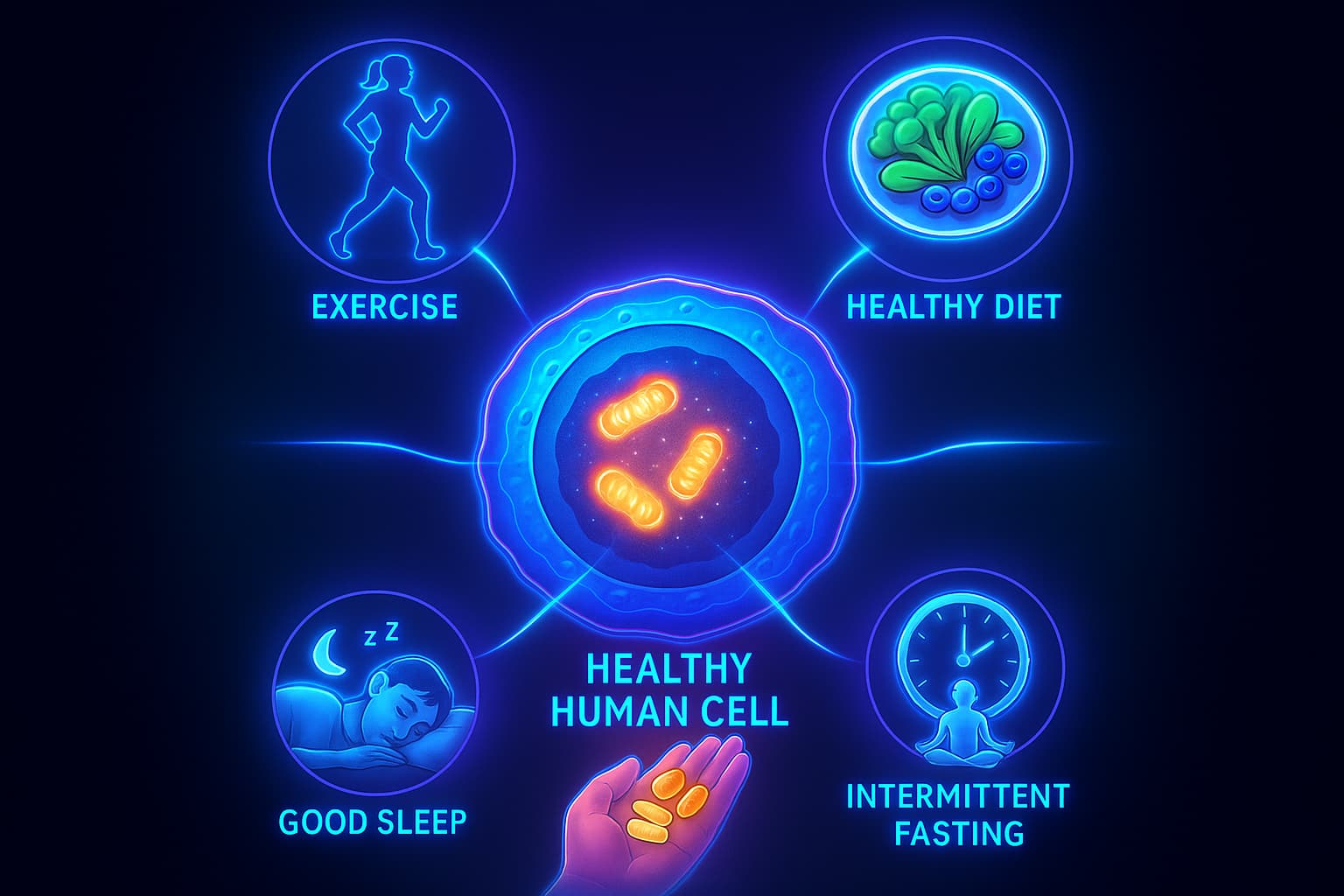
Supporting proteostasis isn’t just about lifestyle, emerging therapies aim to directly enhance your cells’ ability to fold, monitor, and recycle proteins.
1. Autophagy Activators: Switching Cells to Repair Mode
Some therapies aim to stimulate autophagy, the recycling system that clears out damaged proteins and organelles.
One of the most studied is rapamycin, a drug that inhibits mTOR, a protein that tells cells to grow. When mTOR is blocked, cells shift into repair mode, increasing autophagy and enhancing protein quality control.
In animal studies, rapamycin has extended lifespan and improved cellular health, partly by boosting autophagy and supporting proteostasis.
2. Chaperone Boosters: Helping Proteins Fold Right
Chaperones help proteins fold properly, but their levels decline with age. Researchers are exploring ways to restore this function.
One promising compound is arimoclomol, which increases the production of heat shock proteins, a type of chaperone that helps refold damaged proteins, especially during stress.
3. Proteasome Enhancers: Speeding Up the Shredde
The proteasome breaks down misfolded or damaged proteins and boosting its function could help keep cells clean.
Betulinic acid, a natural plant compound, has shown potential in preclinical studies for enhancing proteasome activity and improving protein clearance in aging cells.
These strategies are still in early stages, but they offer a glimpse into a future where we may actively restore the cell’s cleanup systems ,helping maintain function, reduce disease risk, and promote healthy longevity.
Proteostasis, short for protein homeostasis, is your cell’s built-in system for making, folding, maintaining, and recycling proteins. Think of it as your internal housekeeping crew: inspecting every corner, fixing what’s broken, and tossing out the trash before it piles up.
But as we age, that system begins to wear down. Proteins start misfolding, damaged ones accumulate, and the once-efficient workflow inside your cells turns into molecular clutter. This decline isn’t just inconvenient, it’s deeply tied to the aging process itself, contributing to tissue dysfunction, frailty, and neurodegenerative diseases.
You can actively support your proteostasis system every day.
Smart lifestyle habits, like regular exercise, a diet rich in polyphenols, antioxidants, and healthy fats, managing stress, getting enough sleep, and practicing intermittent fasting, all help reinforce your body’s natural cleanup and repair processes.
In addition, certain supplements may offer extra support. Compounds such as resveratrol, curcumin, green tea extract (EGCG), spermidine, and urolithin A have shown promise in boosting cellular recycling systems like autophagy, reducing protein aggregation, and keeping your proteostasis machinery running smoothly.
Protecting proteostasis means protecting your cells’ ability to function at their best, and it’s one of the most powerful things you can do to age well, from the inside out
Now that you’ve unlocked the science behind Loss of Proteostasis, why stop here? The aging process is a mosaic and Loss of Proteostasis is just one piece.
Explore the other hallmarks of aging and see how they connect, interact, and build the bigger picture of biological aging and longevity. Pick the ones that spark your curiosity:
Each of these threads tells a different part of the aging story and each one offers a chance to intervene, repair, and thrive longer.
So… which one will you explore next?